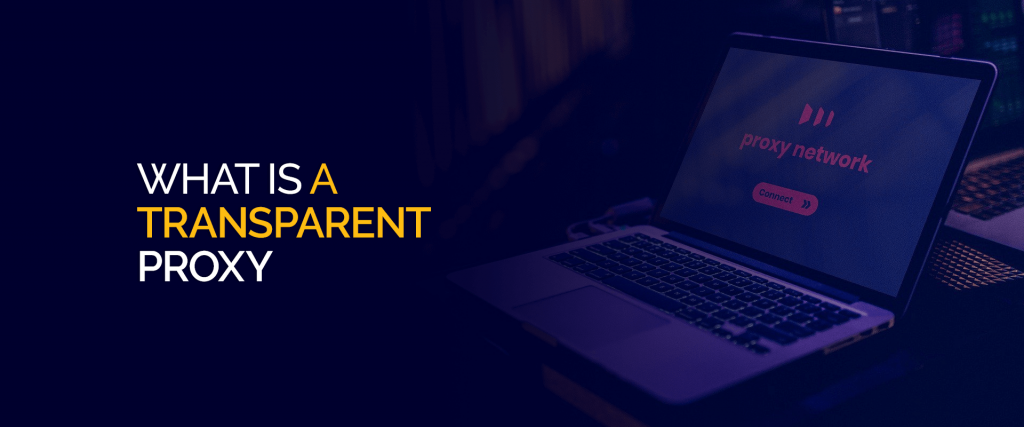

Get 93% OFF on Lifetime
Exclusive Deal
Don’t miss out this deal, it comes with Password Manager FREE of cost.
Get 93% off on FastestVPN and avail PassHulk Password Manager FREE
Get This Deal Now!By Christine Margret No Comments 5 minutes
A server that acts as an intermediary between your computer and the web site’s server that you’re visiting is called transparent proxy.

Transparent proxy has different names, and some of its most common names are inline proxy, intercepting proxy, and forced proxy.
A Transparent proxy is used to analyze the users’ requests by intercepting it and performs different actions including, redirection, authentication and caching.
Transparent proxies are usually used by large organizations to monitor and allow authenticated users only. Transparent proxies work in a way that they are set up on an organization’s network. They invisibly route your traffic without modifying your information.
It means that your request will appear on your destination server as it is coming from you directly. But, in reality, transparent proxies intervene, authenticate and identify your connection.
Unlike ordinary proxies, it doesn’t change your IP, nor protect your connection like a VPN. It just intercepts user requests and route traffic to the destination without letting users know about the intervention.
Let’s assume, a user wants to connect to the restaurant’s Wi-Fi. As soon as the user opens his browser, he will automatically connect to the proxy server that will monitor and control the network’s communication.
If the user is connecting for the first time, then the proxy server will pop up the terms and conditions page before redirecting him to the destination.
Public content delivery networks are also an example of transparent proxies on a larger scale. These networks improve speed and redundancy without changing the user request.
Users think that they are directly connecting to the service provider, but in reality, these CDNs manage and monitor all of the users’ requests.
Companies including Google and Facebook also follow the transparent proxy rules.
Transparent proxies can be used for multiple purposes and some of its most common uses are:
Receives a request from the client and saves it to serve upon the next relevant request
Filtering proxies are mostly used by large organizations to prevent user access to the sources which are disruptive for the organization.
Gateway proxies are used to block network traffic that doesn’t follow a rule table. A good example is the Firewall transparent proxy that blocks traffic in case of rule violation.
There are various methods to keep a check if you are on a transparent proxy. However, one straightforward way is to connect to a server that doesn’t exist.
You’ll see an error saying “This site cannot be reached” it means that there’s no proxy behind.
In case, if you’re redirecting to any other page instead of the error, it shows that you’re behind a proxy.
The transparent proxy server lies between the client and the internet and redirects all the requests and responses without modifying them. Whereas, non-transparent proxy server modify all the requests and responses.
A transparent proxy doesn’t require any specific configuration to set up on the client browser, but non-transparent proxy requires configuration settings in the application.
The best way to bypass transparent proxy is to use a good VPN that can encrypt all your traffic that is transmitting from the device. FastestVPN also encrypts traffic including DNS and HTTP/S traffic.
A transparent proxy cannot take any action without accessing your data destination. Therefore, a transparent proxy will directly send your request to the destination without modification, unless there’s any explicit server that blocks VPN traffic. Bear in mind that a VPN makes the proxy cache unreachable hence, things get a bit slower for the end-users.
Websites that use an HTTPS secure browser can also protect data from any interception.
Most of the DNS traffic is not encrypted and shows proxy server the location where it is reaching. However, the actual content of the data is encrypted and cannot be cached.
But, a proxy can identify the location where the data is going.
Note: Transparent proxies often don’t support DNS or DNSSEC.
Specific transparent proxy software called Squid is able to manage HTTPS traffic in various ways.
If a transparent proxy server has its HTTPS certificate authority set up by the network administrator, then the proxy server will perform as the middle man and HTTPS traffic will be decrypted at the proxy server, not at the destination website.
In this way, the data will easily be cached and filtered before getting re-encrypted to be reached on the destination.
Transparent proxies are considered as the malware for the end-users because they intercept and redirect traffic to another destination. However, not all transparent proxies contain malware.
Sometimes transparent proxies are set up to monitor the sensitivity of the request. Use a VPN to stay safe from transparent proxies and keep your traffic free of interventions.
© Copyright 2025 Fastest VPN - All Rights Reserved.


Don’t miss out this deal, it comes with Password Manager FREE of cost.
This website uses cookies so that we can provide you with the best user experience possible. Cookie information is stored in your browser and performs functions such as recognising you when you return to our website and helping our team to understand which sections of the website you find most interesting and useful.
Strictly Necessary Cookie should be enabled at all times so that we can save your preferences for cookie settings.
If you disable this cookie, we will not be able to save your preferences. This means that every time you visit this website you will need to enable or disable cookies again.